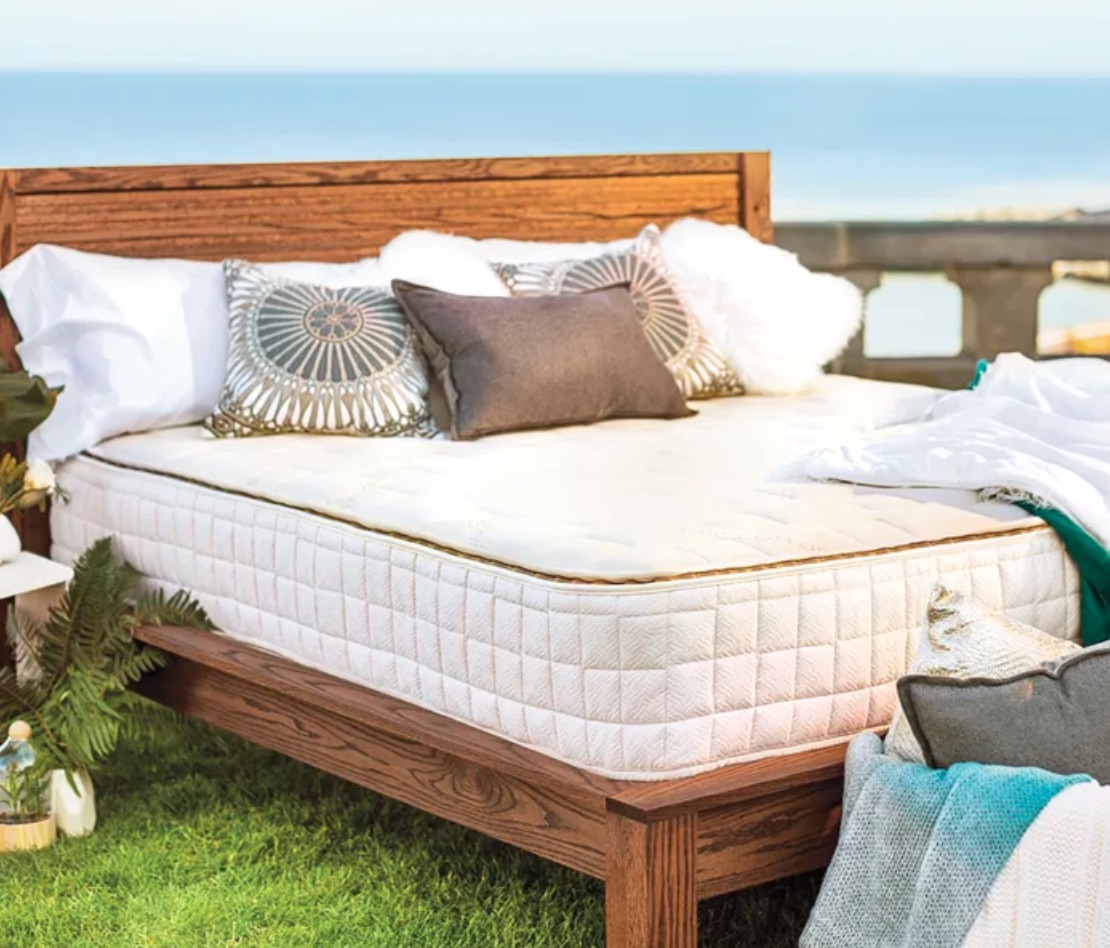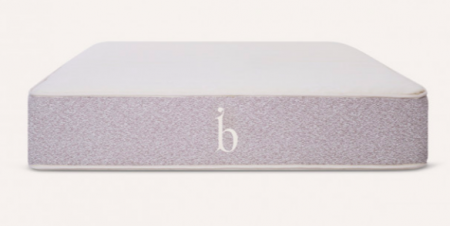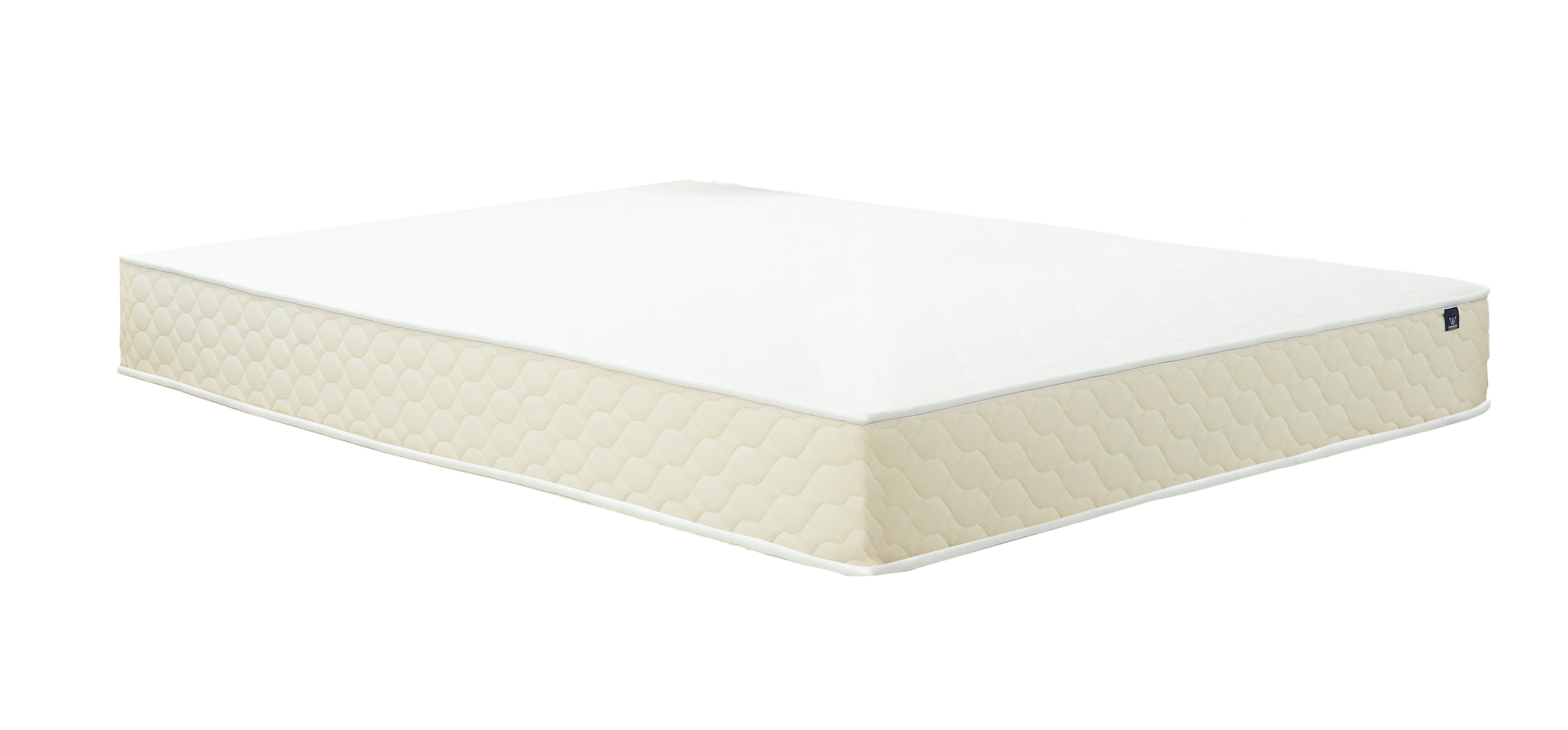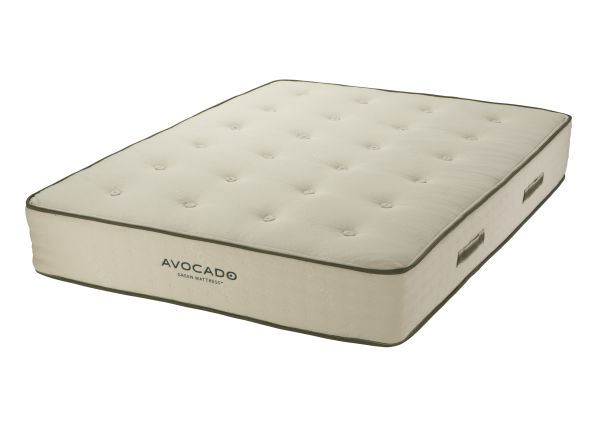Choosing the Best Organic Mattress
To find the best organic mattress for you, you need to answer two main questions:
- First, does the mattress satisfy your concerns as an eco-conscious shopper?
- Secondly, is the mattress construction and firmness suitable to your needs as a sleeper?
To answer these questions, you’ll need to have some background knowledge on what makes a mattress eco-friendly, and what makes it supportive for you as a sleeper. Let’s start with the eco-friendly question, by evaluating the sustainable materials these mattresses are made from, and the green certifications they can receive for their production and manufacturing practices.
How Flammability Standards Have Affected the Non-Toxic Mattress Movement
In 2007, the Consumer Product Safety Commission (CPSC) passed a new flammability standard that targeted mattresses. Under the current regulation, mattresses manufactured for sale in the U.S. must be flame- and fire-resistant. The law originally targeted the high number of annual deaths caused by fires in bed. However, many mattress manufacturers have turned to chemical flame retardants to address the issue — many of which pose a serious health risk to humans.
The most damaging fire retardants used in mattresses are polybrominated diphenyl ethers, or PBDEs, which have been linked to liver, thyroid, and neurodevelopmental problems. PBDEs are monitored by the Environmental Protection Agency (EPA), and have been banned in Maine and Washington state. Initially, mattresses were doused in PBDE-based retardant, but this method is now prohibited. However, some mattress foams are treated with PBDEs to make them more fire-resistant, and these may also pose similar health risks.
A true green mattress will not contain any chemical flame retardants. Instead, most green models feature fire socks that act as flame barriers. Fire socks are usually made from silica, but some mattresses have fire socks made from more natural materials like wool or thistle. Kevlar, a material that requires no chemical treatment, may also be used. In any case, a chemical-free fire sock is considered much greener and healthier for humans than any chemical flame retardant.
Some mattresses do not utilize chemical treatments, nor do they feature a fire sock or flame barrier; because their mattress materials have a higher fuel load and take longer to burn, these manufacturers are able to meet state and federal flammability standards.
What Green Certifications Exist for Organic Mattresses?
How can customers differentiate between green and non-green mattresses? Certifications that focus on human health and/or environmental impacts are one way to tell these products apart. Certifications are awarded to mattresses at different stages of production, and may focus on human health risks and/or environmental impacts.
The most prominent certifications that focus on human health risk factors include the following:
- OEKO-TEX Standard 100: This is the standard certification from the International Association for Research and Testing in the Field of Textile and Leather Ecology, or OEKO-TEX, which consists of 18 independent research and testing institutes in Europe and Japan. This standard does not evaluate mattresses for being organic, but rather ensures the product has not exceeded emission limits for certain chemicals that pose a health risk to humans. These chemicals include volatile organic compounds (VOCs), formaldehyde, PBDEs and other flame retardants, and dyes that trigger allergies.
- CertiPUR-US: The CertiPUR-US certification tests for chemical emissions for polyurethane foam (polyfoam) used in mattress layers, as well as harmful materials like PBDEs and lead. It’s important to note that other certifying bodies, such as the Global Organic Textile Standard (GOTS) and the Global Organic Latex Standard (GOLS), will not certify mattresses that contain any polyurethane foam (see below).
- Eco-Institut: The Eco-Institut is an independent certification organization based in Germany that evaluates textiles and building materials for hazardous emissions and chemical substances. Within the mattress industry, the Eco-Institut certification is most commonly associated with latex mattresses (learn more).
The following certifications focus primarily on environmental impacts:
- Global Organic Textile Standard (GOTS): The GOTS certification evaluates organic fibers, including both raw materials and their derivative products. In order to be GOTS certified, a mattress must be made with at least 70% materials that are certified as organic. Furthermore, the remaining 30% or less cannot contain certain materials, including polyfoam or formaldehyde.
- Global Organic Latex Standard (GOLS): The GOLS, which evaluates latex products, is similar to the GOTS certification. In order to receive GOLS certification, the latex must be at least 95% organically produced. There are currently no prohibitions for materials that make up the remaining 5%. Natural latex may be GOTS and GOLS certified.
- GreenGuard and GreenGuard Gold: The GreenGuard certification is used to evaluate finished mattresses for VOC emissions. The GreenGuard Gold certification also tests mattresses for the same qualities, albeit with a stricter set of standards. GreenGuard and GreenGuard Gold certifications ensure minimal VOC emissions, but mattress buyers should be warned: the certifications do not guarantee against off-gassing odors when a mattress is removed from its packaging.
- United States Department of Agriculture (USDA) Organic/National Organic Program (NOP): Although the USDA Organic label is most commonly associated with food, it can also be used to evaluate crops and agricultural materials used in mattresses and other consumer products. In these cases, the USDA Organic certification is used to evaluate raw materials, rather than their derivatives. For instance, let’s look at latex, which is processed using the sap of rubber trees. If latex earns a USDA Organic label, this means the rubber trees were grown using organic farming techniques and have not been treated with certain chemical pesticides, but the final latex product may not actually be organic.
- OEKO-TEX MADE IN GREEN: This certification from OEKO-TEX focuses on sustainable processes used to create a product, as opposed to the OEKO-TEX Standard 100, which tests for harmful substances and emissions.
- Cradle to Cradle: Cradle to Cradle certification tests organic fibers and materials for a wide range of sustainable criteria, including carbon emissions, water conservation, and overall ecological impact. It is commonly used to evaluate latex, as well as organic materials used in mattress covers (such as organic cotton or organic wool).
- The Global Recycled Standard: This is the certification from Textile Exchange, an independent organization. The Global Recycled Standard ensures that a given material has been produced using environmentally healthy and sustainable practices.
- Rainforest Alliance Certified: To receive this certification, the mattress must use latex sourced from forests that promote environmental conservation, protect endangered species and indigenous peoples, provide workers with living wages, and practice sustainable harvesting practices.
This is not an exhaustive list, and some mattress models will display additional certifications. Be sure to research each certification listed to determine if it is independent and trustworthy.
Most mattress manufacturers will provide all current certifications for each model. This information is typically displayed on individual product pages, and may also be found in other areas of the brand’s website (such as FAQ and About Us sections).
What Types of Natural and Organic Mattresses Are Available?
Beyond certifications, criteria for green, natural, and organic mattresses vary by specific mattress type. This section will look at green standards for hybrid, latex, foam, and innerspring mattresses.
Hybrids are designed to bridge the gap between all-foam/all-latex and innerspring mattresses. Technically speaking, a hybrid mattress has a coil-based support core and at least two inches of memory foam and/or latex in the comfort system. Most hybrids have pocketed coils, which are encased in cloth or fabric.
Hybrids typically have coil and/or comfort layer components that are produced using industrial processes. As a result, many are not considered green or organic. However, they may have materials in the comfort layer or cover that have been certified as organic, usually natural latex, organic cotton, or organic wool. These latex hybrids will also use recycled steel for the pocketed coils in the support core.
Best Organic Latex Beds
Mattress Reviews
Zenhaven Mattress Review
Most green mattresses are categorized as latex models. Latex is a natural substance processed from rubber tree sap. Two types of processes are used to produce latex:
- The Dunlop Process requires rubber tree sap to be stirred, molded, and stem-baked. Dunlop latex tends to be heterogenous and somewhat bottom-heavy, with a lighter, frothier substance on top and sediment that accumulates on the bottom. As a result, it is commonly used in the support core of all-latex mattresses. Of our top picks, the Zenhaven and Avocado Green mattresses all feature Dunlop latex in their construction.
- The Talalay Process requires the sap to be vacuum-sealed, then frozen and baked. Talalay latex is much lighter and more homogenous than Dunlop latex, and is typically used in the comfort layer of all-latex mattresses (as well as select hybrids like the Birch Mattress and the EcoCloud.
In addition to the process, the latex used in mattress can also be categorized by its ratio of natural to synthetic components. The table below provides a detailed breakdown for the three most common latex types.
Greenwashing is particularly common with latex mattresses. This is due to the fact that ‘100% natural’ or ‘100% organic’ latex is nonexistent; some chemical components are needed to produce latex foam. Nevertheless, some mattresses are sold as ‘all-natural,’ even if the latex used to create them is primarily synthetic.
Additionally, the USDA Organic label for latex mattresses evaluates the way the rubber trees are grown, not the process used to derive the latex from rubber tree sap; for this reason, a USDA Organic latex mattress may not be organic at all. The GOLS certification, which takes raw materials and derivatives into consideration, is considered the more accurate certification for organic latex mattresses.
The term ‘foam mattress’ can refer to two different mattress materials:
- Standard Polyurethane foam, or ‘polyfoam,’ which has not been treated with chemicals for added softness and temperature response. This material is often found in base support core layers, but may also make up the comfort layer as well. Polyfoam mattresses tend to be low-priced and have below-average lifespans.
- Viscoelastic polyurethane foam, or ‘memory foam,’ which is treated with petrochemicals for exceptional softness. Memory foam reacts to the body temperature of sleepers; it becomes softer when it comes into contact with heat, and then cools and returns to its original shape when body heat is removed. Memory foam is typically used in the comfort layer, but usually not the support core (where standard polyfoam is used). In addition to all-foam mattresses, memory foam layers may also be found in other mattress types, such as hybrids and airbeds.
While polyfoam and memory foam mattresses are tested and certified to ensure they pose minimal risk to human health, it’s important to remember that mattress with any polyurethane components (including foams) are not eligible for the GOTS or GOLS certifications.
While polyfoam and memory foam are never 100% natural or organic, plant-based memory foam (or PLA for short) is considered a slightly greener alternative. This material is produced from plant-based oils, rather than petroleum and other chemicals.
Innerspring mattresses get their name from the steel coils that make up most of their support core. The comfort layers typically consist of at least one layer of polyfoam or memory foam; innersprings that feature more than two inches of memory foam are technically considered hybrids.
Some innersprings are labeled as green and may be produced using sustainable methods. However, in most cases, the springs and/or comfort layer materials are created using industrial processes that are not truly green.
Selecting Your Mattress Firmness Level
Now that you know how to evaluate the greenness of a particular mattress, it’s time to evaluate its suitability for your unique needs as a sleeper. Generally, sleepers have different firmness preferences based on their body weight and sleep position.
For a person of average weight, between 130 and 230 pounds, a mattress with a firmness rating of ‘Medium’ or ‘Medium Firm’ (around a 5 or 6 on a 1-to-10 scale) feels most comfortable. Lightweight sleepers who weigh less than 130 pounds may need a softer mattress, while heavier sleepers may require a firmer mattress to enjoy sufficient support.
Your preferred sleep position can also impact the suitability of a mattress firmness rating for you. For example, side sleepers require more “give” from their mattresses, in order to relieve pressure in the shoulders and hips and enable a straight spine from hips to head. On the flipside, back sleepers and stomach sleepers, may need a firmer mattress to ensure spinal alignment.
Of course, preferences vary by individual. As long as your mattress feels great to sleep on, and you don’t wake up with aches or pains, don’t worry about whether your firmness rating is “normal.” The table below outlines the typical firmness preferences by sleep position and weight group.





